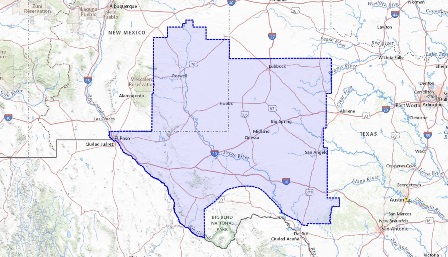
Climate Tech Firm Scepter, Inc. to Launch Methane-Detection Balloons in Texas’ Permian Basin
SAN FRANCISCO–(BUSINESS WIRE)–On the heels of the COP27 climate summit, Scepter, Inc., an emerging company that uses global Earth- and air-based data to measure climate gases and air pollution in real time, has today announced it is set to launch in January a stratospheric balloon enabled with methane-detection sensors in Texas’ Permian Basin, which will gather first-of-its-kind data on methane emissions.
“These balloon sensors in the stratosphere enable us to turn on our methane information service offering now. Active regional operations are a stepping stone to our ultimate goal of launching sensors in space, in low-Earth orbit, with satellites to monitor emissions globally and in real time,” announced Scepter Founder and CEO Philip Father.
The Permian is a region in west Texas that is among the largest oil- and gas-producing regions in the world. Balloons carrying hyperspectral sensors operating in short-wave infrared have never been commercially deployed before to get this detailed level of data, measuring down to 50 kg methane per hour and lower—a moderate-sized industrial leak.
Balloons can also uncover “intermittent” leaks in oil- and gas-production, another first. Intermittent leaks often go undetected because they are not necessarily active when an aircraft or drone flies overhead. In contrast, the balloons can “dwell” over an area of interest on a 24/7 basis to uncover leaks and develop an emissions map of the region. Thus, the Scepter balloon approach presents a notable advance over current methods, with improved quantification from an airborne view. Balloons also provide a more holistic perspective than Earth-based sensors, which only measure their immediate vicinity.
Matt Alvarado, VP of R&D at Atmospheric and Environmental Research (AER), a Verisk (Nasdaq:VRSK) subsidiary, said of the new technique, “We are excited to be working with Scepter to deliver a novel, continuous methane-monitoring capability to the oil and gas industry. Intermittent leaks are thought to emit two to three times more methane than the persistent sources currently reported by conventional methods. So, Scepter’s work uncovering intermittent sources with balloons will be huge for the industry and the world.” AER will be working on the project with Scepter to analyze the vast amounts of data generated over the Permian.
The first balloon will go up in January 2023, initially covering ExxonMobil areas of interest. In April, Scepter will launch a second balloon in the Permian to cover additional areas that encompass oil fields operated by companies that include Pioneer, Chevron, Occidental and others.
Tucson-based stratospheric balloon company World View is working closely with Scepter to bring the balloon capabilities to the mission. “We are delighted to be working with Scepter strategically to integrate the most appropriate class of assets into Scepter’s overall approach to render the atmosphere’s composition in real time,” said Matteo Genna, World View President, Remote Sensing. “We believe climate change is the biggest issue of our time.”
Beyond the Permian Basin, Scepter is poised to deploy more regional sensors in partnership with state-run oil and gas companies in Asia and the Middle East in 2023. The company will then move to its next phase in 2024: launching sensors on low-Earth-orbit satellites to monitor global emissions.
Methane has been estimated as causing about 20% of greenhouse gases and the oil industry accounts for about a third of the global methane released into the atmosphere. Notably, the Biden Administration infrastructure law, passed last year, mandates that oil and gas companies monitor methane emissions or be penalized, with the goal of reducing emissions globally.
“The climate provisions in the new infrastructure law put a real tailwind behind Scepter’s plans to work with the oil industry to reduce pollutants,” added Father. “Finally, it makes economic sense for oil and gas companies to mitigate their emissions, and Scepter is poised to be part of that.”
ABOUT SCEPTER
Scepter has developed and patented a ground-breaking approach to monitoring the atmosphere in real-time using an array of terrestrial, airborne and low-Earth-orbit satellite-based sensors to provide actionable information for businesses, consumers, governments and NGOs.
These capabilities are not only critical for solving the global pollution and climate change crises, but also provide the platform for an emerging multibillion-dollar commercial atmospheric monitoring services industry with markets in government, energy, industrial, healthcare, agriculture, insurance and cosmetics, beginning with the oil and gas industry. Scepter distinguishes itself among other air monitoring entities in that its measurements are in real-time and measure a variety of emissions: particulates, methane and other criteria pollutants. The unique qualities of Scepter’s process are reflected in patents awarded to the company in the U.S. and internationally. For more on Scepter, visit www.ScepterAir.com.
Contacts
Gary Start at gstart@scepterair.com

